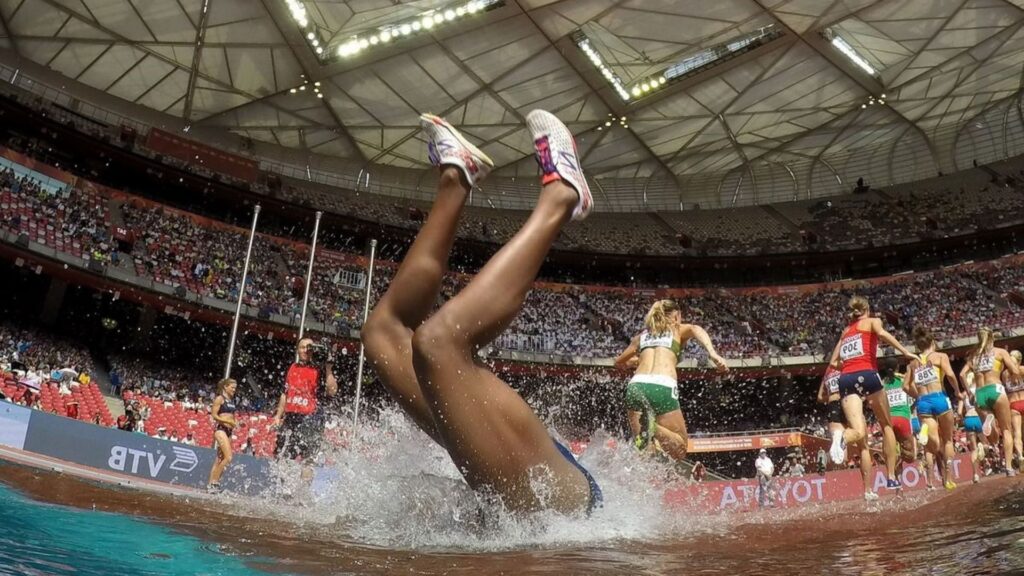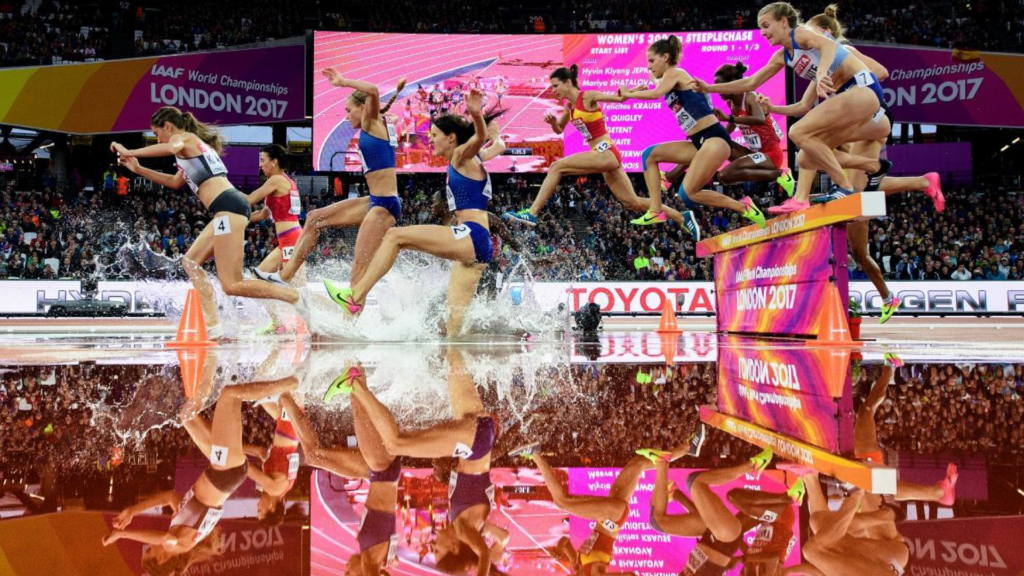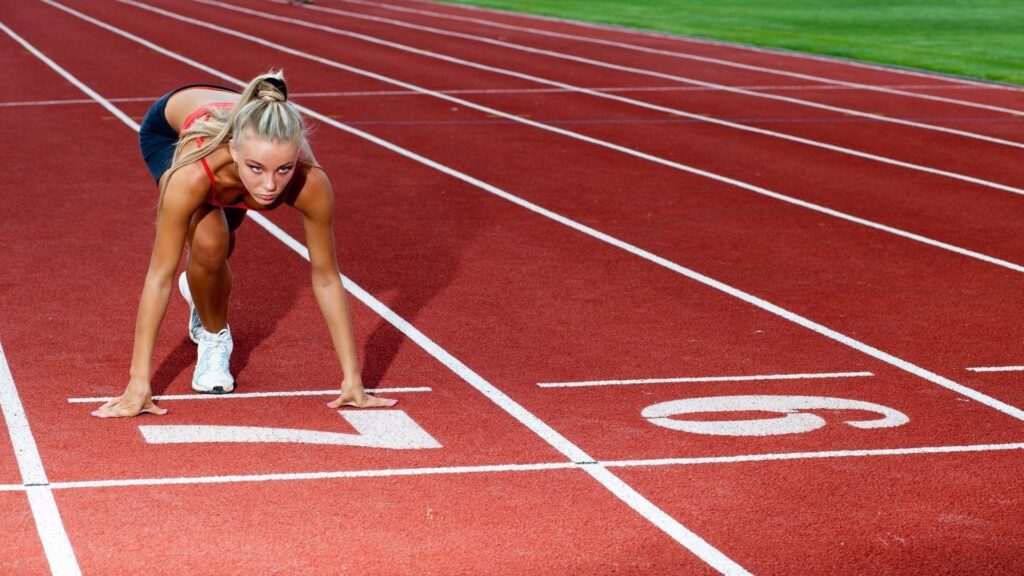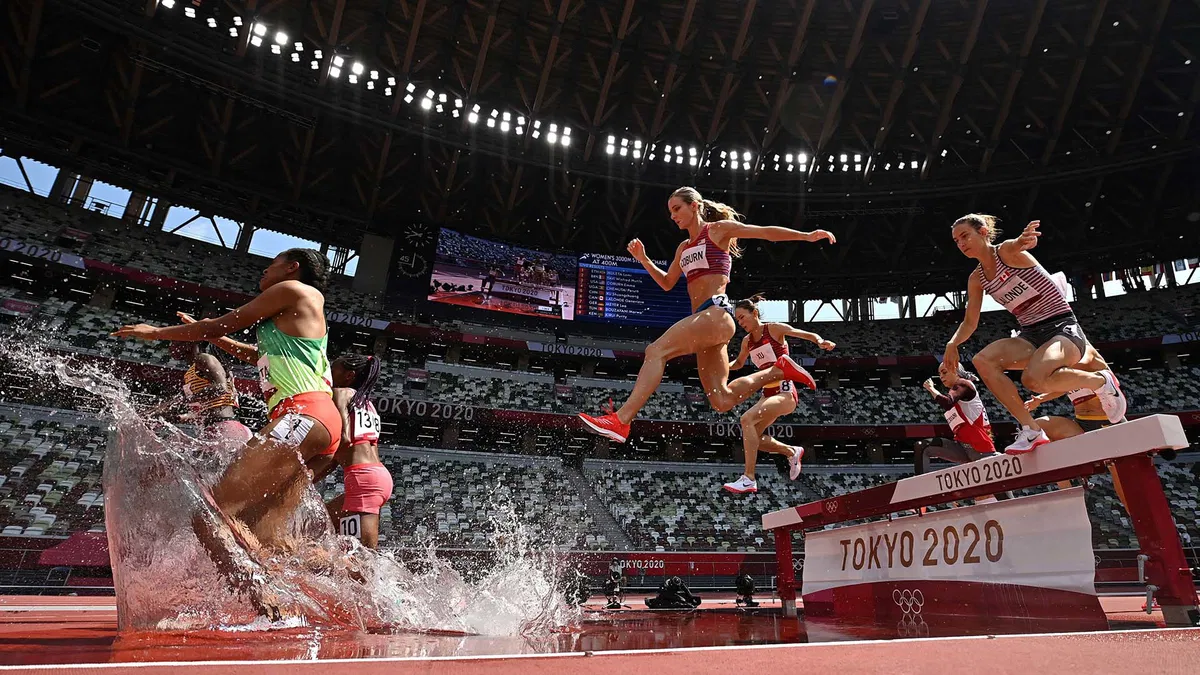One of the most unique and difficult track & field events is the steeplechase. A genuine test of an athlete’s adaptability, the steeplechase combines speed, agility, endurance, and the technical challenge of clearing barriers and water jumps. The rich history of steeplechase, its development over time, the abilities needed to succeed in this event, and the individuals who have made a lasting impact on the sport will all be covered in this article.

Historical Roots in Equestrianism
The steeplechase originated in the equestrian world in the 18th century as a cross-country competition between horse riders in Ireland. The sport of racing between church steeples, dodging obstacles like fences, hedges, and streams along the way, gave rise to the term “steeplechase”.
Transition to Track and Field
In the middle of the 1800s, steeplechase gave way to athletics. The competition was modified for runners, and when it was added to the track and field schedule
The Evolution of the Event
The 3,000-meter race, which has seven water jumps and 28 barriers, is the most popular variant. Both in popularity and technique, the event has developed into a mainstay of track and field tournaments across the globe.

Understanding the Steeplechase Event :The 3,000-Meter Steeplechase
The typical distance for men in major competitions, like as the Olympics and World Championships, is the 3,000-meter steeplechase.
Women’s Steeplechase
It debuted at the Olympics in Beijing in 2008. A major turning point in the development of track and field was the addition of the women’s event, which reflected the increasing equality in athletics.

Training for Steeplechase: Physical Conditioning
The race mixes the components of a distance run with the explosive power required to clear obstacles, therefore athletes must train for both strength and endurance. To develop the required power and agility, training regimens frequently incorporate plyometrics, interval training, and long-distance running.
Technique Training
Efficient barrier clearance is essential in steeplechase. Hurdling is a skill that athletes spend a lot of time honing. They concentrate on landing in a position that allows them to quickly return to running and on reducing the amount of time they spend in the air. Technique for water jumps is very important since it can make all the difference in close races.

Conclusion
Steeplechase is a race, but it’s also an exhibition of the adaptability, fortitude, and determination of competitors who take on the challenge of integrating obstacles with long distance running. The steeplechase has captivated the interest of spectators and competitors. Alike since its beginnings in equestrian sports and current standing as a top track and field competition.
FAQs
What is the steeplechase event in track and field?
Track and field competitors that race a distance while dodging barriers and water jumps compete in the steeplechase. The 3,000-meter race, which has seven water jumps and 28 barriers, is the most popular variant. The event is distinct in that it calls for both technical proficiency and endurance.
How did steeplechase originate?
Steeplechase originated in the 18th century in Ireland as a cross-country horse race between church steeples, which were visible landmarks. The event transitioned to athletics in the 19th century, where it was adapted for runners, becoming a staple in track and field competitions.
What are the key skills needed to excel in steeplechase?
To excel in steeplechase, athletes need a combination of endurance, speed, agility, and technical skill. Runners must be able to clear solid barriers efficiently, navigate water jumps, and maintain a strong pace throughout the race. Mental toughness and strategic pacing are also crucial for success.
When was the women’s steeplechase introduced in the Olympics?
2008 saw the debut of the women’s 3,000-meter steeplechase at the Beijing Olympics. The fact that this was the first major international tournament to feature an all-male field for the event signified a key turning point for gender equality in athletics.
Who are some of the most famous steeplechase athletes?
Some of the most famous steeplechase athletes include Ezekiel Kemboi of Kenya, a two-time Olympic gold medalist and multiple World Champion, and Ruth Jebet, who won the gold medal in the women’s steeplechase at the 2016 Rio Olympics and set a world record in the same year. Other notable athletes include Volmari Iso-Hollo from Finland and Anders Gärderud from Sweden.




Pingback: Astros vs Orioles: A Clash of Baseball Titans - The Sport Sonic